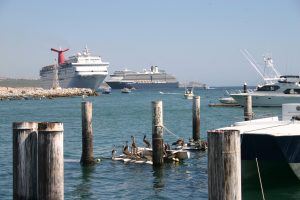Keeping Cruise Ship Passengers Healthy
With winter now here, Cruise Lines International Association (CLIA) shares the industry’s top five best practices for keeping passengers and crew healthy.
“For cruise lines, keeping passengers healthy is essential to an enjoyable vacation,” said Donnie Brown, vice-president of maritime policy, CLIA. “With more than 24 million passengers cruising each year from around the world, we know that prevention is key. That is why cruise lines have committed numerous resources and best practices to maintain a healthy ship environment.”
From cleaning practices to passenger screening and public health inspections, cruise lines adopt several measures for keeping all onboard well, including:
- Sanitation: Trained crew members regularly clean and sanitize the ship. Cabins are cleaned at least once a day and common areas such as restaurants, snack areas, pools and elevators are cleaned throughout the day. At the end of every cruise, crew clean the ship from top to bottom using designated cleaning supplies and sanitation procedures.
- Screening: The importance of early detection cannot be understated, which is why the cruise industry implements pre-boarding health screenings. These screenings along with a health questionnaire help identify ill passengers or crew members prior to boarding by indicating if they or their travelling companions have had recent symptoms of illness. Passengers who may be ill are assessed by medical staff before they interact with other guests.
- Medical Facilities: CLIA Cruise Lines and the American College of Emergency Physicians (ACEP) developed and implemented guidelines on cruise ship medical facilities. The ACEP Guidelines (2014), mandatory for all CLIA oceangoing cruise line members, address the facilities, staffing, equipment and procedures for medical infirmaries on cruise ships.
- Collaboration: Cruise lines work closely with the Centers for Disease Control and Prevention’s (CDC) Vessel Sanitation Program (VSP) in a comprehensive effort to employ preventative practices to achieve the highest standards of public health onboard cruise ships. The VSP provides a level of federal scrutiny and transparency for cruise line sanitation that’s unique in the travel and hospitality industry – there is no similar federal program for hotels, airlines or restaurants.
- Training: Onboard staff must be trained in first aid and public health practices. Regardless of a crew member’s job onboard, they are trained in safety and first aid procedures, such as emergency procedures, signals and alarms; evacuation procedures; and fire prevention and fire safety.
To evaluate the effectiveness of such best practices, public health officers from the CDC make at least two unannounced inspections each year on cruise ships calling on US ports. The public can access the inspection score of every ship. During these routine inspections, CLIA Cruise Line Members often earn perfect scores.
(https://www.cruising.org/cruise-vacationer/industry-facts/health)



